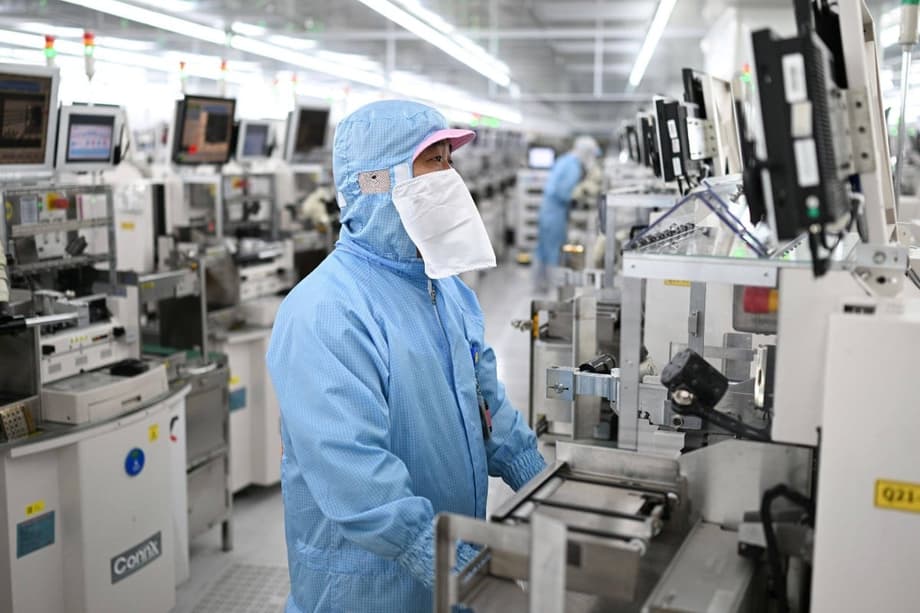Why the new Shenzhen platform matters now
A new state level platform for testing and certifying automotive chips has opened in Shenzhen, giving China its first centralized government backed hub for verifying vehicle grade semiconductors. The facility, co founded by China Reform Holdings and the China Automotive Technology and Research Center (CATARC), began operations with 13 laboratories and more than 80 sets of instruments. It is designed to run automotive grade environmental and reliability testing, information security checks, and detailed failure analysis across a wide range of chips that sit inside powertrains, safety systems, body electronics, and advanced driver assistance units. The project aligns with policy targets laid out for the next five year plan period (2026 to 2030), which call for greater self reliance in key technologies and stronger domestic standards.
The timing is striking. The launch comes during fresh stress in the global auto supply chain linked to Nexperia, a Dutch semiconductor maker owned by Chinas Wingtech Technology. A regulatory standoff has slowed or halted exports from Nexperias operations in China. Carmakers on multiple continents warn they are running low on basic semiconductors that control airbags, power steering, engine management, and lighting. Industry groups in Europe and the United States say vehicle assembly lines could face stoppages within days to weeks if supplies do not resume, and some manufacturers have already adjusted production schedules to stretch remaining inventories.
What the platform will test
Shenzhen’s new hub covers nine major and 81 subcategories of automotive chips, according to project backers. That spans application processors for intelligent driving and smart cockpit features, microcontrollers and interface logic for vehicle control, power semiconductors that switch current to motors and inverters, security components that protect communications, and memory devices. The laboratories are set up for performance and stress tests across temperature, vibration, and humidity ranges that are typical for automotive grade parts, along with long duration aging tests that help predict how a component will behave over years of service.
Automotive chips must pass tougher checks than parts used in consumer phones or laptops. Reliability norms include standards such as AEC Q100 and AEC Q101, which focus on qualification for integrated circuits and discrete devices, and tests for electrostatic discharge, latch up, and temperature cycling. Functional safety, the discipline behind ISO 26262, requires engineers to prove that electronics do not introduce unreasonable risk to the driver or others, and that failures degrade a system in a controlled way. Cybersecurity has become part of that picture as cars connect to cloud services and vehicle to everything networks, so the Shenzhen platform includes information security evaluations that look for vulnerabilities in chip level firmware and interfaces.
Backing all of this is failure analysis, the forensic process used to identify root causes when a component does not meet spec. That work relies on scanning electron microscopes, cross sectioning, and thermal imaging to locate defects, and it feeds into corrective action for both chip designers and manufacturers. By combining these capabilities under one roof, project leaders say the platform reduces the need for companies to send a part to multiple institutions, a process that adds cost and delays. A unified approach can shorten validation cycles, which is a priority for automakers that are trying to integrate more computing into new models without slipping launch timelines.
How Nexperia became a pressure point
Nexperia sits at the center of the current supply squeeze. The company traces its roots to the discrete and power semiconductor business of NXP in the Netherlands. Wingtech Technology of China acquired Nexperia in 2019, and the firm has since supplied a large share of the commodity components that keep vehicles running. These are not the headline grabbing processors that enable automated driving. They are the diodes, logic chips, analog amplifiers, and small microcontrollers that show up in dozens of control units across every modern car.
Government actions have now put that flow at risk. In early October, a Dutch court suspended Nexperia’s former chief executive and transferred voting rights to an independent administrator, citing concerns about governance. The Dutch government invoked emergency powers to keep oversight of strategic production. Beijing responded by restricting or blocking exports from Nexperia’s factories in China. Nexperia has said regular operations continue, yet the bottleneck on shipments has rippled through the automotive supply chain.
Automakers have begun to feel the pinch. European industry representatives warn that lines could be idled within days without fresh deliveries. Some carmakers have relied on buffer stocks, but those are finite. Reports from the sector point to isolated shutdowns in North America and Mexico and to tight conditions in Japan. A leading United States auto parts association has cautioned that domestic manufacturers could face significant production disruptions within two to four weeks if the situation persists. The squeeze involves inexpensive chips with few substitutes, and it has arrived at a time when order books remain strong for many models.
Why legacy chips can stop modern cars
The term legacy chips refers to components built on mature manufacturing processes, often at larger geometries than the cutting edge used for smartphone processors or cloud data centers. Many are made on 200 millimeter wafers at nodes such as 130 nanometers or 180 nanometers. These devices are cheap per unit, yet they carry high switching currents, withstand heat and electrical noise, and come in packages that are rugged enough for life inside an engine bay. Their performance is stable and well understood, which is exactly what a vehicle program needs to meet safety and reliability targets over a model’s life cycle.
Replacing such parts is difficult. Engineers design control units around the electrical characteristics, pin layouts, and failure modes of specific devices. A drop in replacement must pass the same qualification tests, meet electromagnetic compatibility rules for the whole vehicle, and integrate with software that expects a certain behavior. Even when an alternative exists, an automaker still has to perform bench tests and road validation to ensure there are no side effects. That process can take weeks or months. A shortage of a fifty cent part can stop production just as effectively as a shortage of a high value processor, because there is no way to ship a finished car without the part and there is usually no immediate workaround.
China’s strategy for vehicle grade semiconductors
Chinese policymakers have spent several years pushing for domestic capacity in critical chips, and vehicles are near the top of the list. The Shenzhen test platform is the first state backed infrastructure focused on verification for auto chips. Shenzhen authorities say it is expected to jump start localization of high end automotive semiconductors. The aim is not simply to test parts, but to define consistent evaluation methods, establish a national framework for automotive grade verification, and raise the baseline for quality across domestic suppliers.
This approach dovetails with industrial policy that encourages carmakers to adopt locally designed and produced chips where feasible. A robust test and certification center lowers barriers for smaller design houses that otherwise would need to stitch together services from multiple labs. It also gives foundries and packaging providers a clearer target for what passes muster in a vehicle, which can cut down on iterations and improve yields. Over time, a shared verification backbone can help Chinese companies bring safety processors, domain controllers, and power devices to market faster and with fewer defects, which is essential for winning business with risk averse auto manufacturers.
From fragmented testing to one stop verification
Until now, chip verification for automotive use in China was fragmented. A designer might have used one institute for accelerated aging and temperature cycling, another for electromagnetic compatibility and radio noise, a third for electrostatic discharge and latch up, and a fourth for security. That patchwork adds time, drives up cost, and increases the chance that different labs interpret standards in slightly different ways. A one stop platform with shared methods can bring consistency while maintaining rigorous thresholds.
In practical terms, the new center can qualify a part against AEC Q requirements, run board level reliability, perform highly accelerated stress tests, and probe deeper with failure analysis if any stage flags a problem. It can also review cyber protections for chips that handle in vehicle communication or connect to external networks. That matters as cars move toward central compute designs and broader connectivity. For buyers, a single report that covers reliability, safety, and security is easier to audit and repeat across programs, which should help time to market without lowering standards.
What it means for carmakers and suppliers
For carmakers operating in China, a centralized test hub could shorten validation cycles for domestically sourced components and give procurement teams greater confidence in second sources. Tier one suppliers that build braking systems, power electronics, and body control modules often juggle qualification for dozens of parts on each program. If the process becomes more predictable and faster, suppliers can lock designs earlier and reduce the risk of late change requests that cascade into production.
Global companies will watch how certifications from the Shenzhen center align with long standing international norms. Automotive quality is built on shared concepts like production part approval processes, defect part per million metrics, and functional safety audits. If Chinese verification outputs map cleanly to these frameworks, suppliers can reuse test evidence across regions. If they diverge, manufacturers may need duplicate testing, which adds cost. Either way, having a major new node for auto chip verification increases capacity in a world that has been short of it.
What happens next for Nexperia and Europe
Diplomatic channels are open. Dutch officials and Chinese counterparts have discussed the path to a solution, while legal and administrative measures remain in place around Nexperia’s governance and operations. European automakers are pressing for a quick resolution because many plants rely on Nexperia for basic semiconductors. Inventories can cushion the blow for a short period, yet the scale of automotive consumption means buffers drain fast once shipments slow. A renewed focus on mature node capacity is also likely in Europe and North America, since many public incentives to date have targeted advanced process technology rather than the legacy chips that are now scarce.
Carmakers and suppliers are revisiting sourcing strategies. Some are expanding dual sourcing for critical components where viable, and others are engaging directly with chipmakers to secure allocation. The situation underscores how reliability at the component level feeds directly into the resilience of the entire industry. Shenzhen’s new platform is not a quick fix for the current shortage, yet it signals a long term push to build a deeper domestic base for automotive semiconductors and to standardize how those parts are judged ready for the road.
Key Points
- China opened a state backed automotive chip testing and certification platform in Shenzhen, co founded by China Reform Holdings and CATARC.
- The center houses 13 laboratories and more than 80 instruments for reliability, environmental, security, and failure analysis work.
- The platform covers nine major and 81 subcategories of auto chips and aims to unify verification methods for vehicle grade parts.
- The launch comes amid a supply crunch tied to Nexperia, whose exports from China have been disrupted during a regulatory standoff.
- European and United States industry groups warn of potential assembly line stoppages within days to weeks without fresh chip deliveries.
- Legacy chips are inexpensive but hard to substitute because they require rigorous qualification and often serve safety critical functions.
- Shenzhen’s hub seeks to cut validation time, reduce fragmented testing, and support China’s plan to localize high end auto chips in 2026 to 2030.
- Global acceptance will hinge on how the center’s outputs align with established automotive standards for reliability, safety, and cybersecurity.




